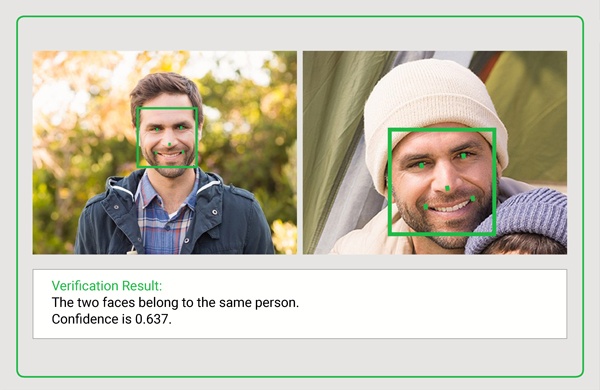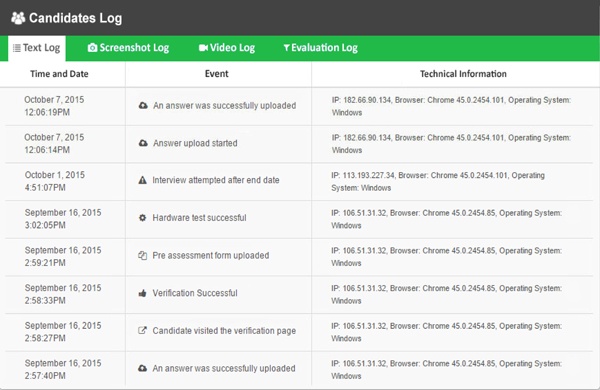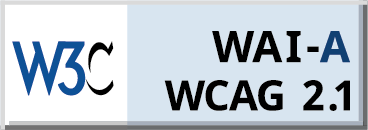In today's world of rapid technological advancements and environmental concerns, remote proctoring and online assessments have emerged as crucial tools for education and professional development. They enable institutions to uphold integrity and inclusivity without boundaries. As we navigate these changes, understanding the nuances of these digital solutions becomes imperative for a future-ready world.
E-learning is the future of learning. The global e-learning market is projected to reach $325 billion USD by 2025. The rapid growth of the e-learning industry has created the need for various supporting technologies.
One area that is gaining significance is virtual proctoring. If it weren’t for e-learning, online video proctoring wouldn't have become mainstream, but given what’s at stake for online course programs, the demand for such a service has grown at a fast pace.
Have you considered opting for an online proctored test instead of classroom exams or non-proctored online tests? This blog covers everything you need to know about using online proctoring for the exam. It discusses the following:
2. Challenges with/without proctored tests
3. What is online exam proctoring and its different types?
4. Who can use an online proctor?
5. How to select a remote proctoring tool?

What is a proctored test, and how does it prevent cheating? Proctoring or Proctored Test is defined as a mechanism to ensure the authenticity of the test taker and prevent him/her from cheating via a proctor present during the duration of the test.
A proctor is a person who is trained and qualified to undertake student authentication and prevent them from doing any form of cheating.
What is Remote Proctoring?
Remote proctoring allows students to undertake examinations online from any location, ensuring the examination's integrity is upheld. Participants are required to verify their identity, which might be observed via video surveillance. This footage is utilized to identify any unusual behaviours among the students.
Online Testing has existed in different formats for the past twenty years. The most common type of online test is an objective test, which tests a candidate on their subject knowledge or is used to understand his or her learning ability or behavioural profile.
What are the problems with offline proctored tests or online tests without proctoring?
1. Providing a proctored exam centre near the location of the test taker is a significant challenge for most organizations administering any form of test.
2. Qualified Proctors are hard to find, and it's hard to ensure the quality of proctoring. And there are no records available to cross-check whether the proctor did his/her job properly.
3. A limited supply of test centres or proctors also leads to extended test schedules.
4. In online tests without proctoring, cases of impersonation and cheating are often reported. Students either ask someone else to take the test on their behalf or use methods of cheating like referring to a textbook, using smartphones or other devices to search for answers online, or taking help from a friend.

What is Online Exam Proctoring?
In Online Exam Proctoring or Online Video Test Proctoring, a candidate is monitored online during the test duration, typically using a webcam, mic, and access to the candidate's screen.
To take an online proctored test from a remote location, candidates need:
1. A suitable device (Desktop PC/Laptop/Tablet/Mobile)
2. An Internet connection with at least 256kbps speed
3. A functional webcam and a mic
4. In PC/Laptop, any of the modern browsers
There are three main types of proctoring:
1. Live Online Proctoring
In live online proctoring, a qualified proctor monitors the candidates, audio-video and screen share feeds in real-time.

Typically, the proctoring service provider will have people sitting in a remote location who have been trained to ensure student authentication and prevent/red flag any form of cheating.
Depending on the provider, a proctor can monitor up to 16 or 32 candidates at a time. This model's advantage is that it removes the location constraint of proctoring.
The disadvantages are that it still requires the exams to be scheduled, and since there is equal human involvement as offline proctoring, it is not very scalable and is the most expensive of all the types.
The test taker and proctor can even be thousands of miles apart. ProctorU is a leading provider in this model.
2. Recorded Proctoring
In Record and Review Proctoring, no proctor is monitors the feed in real-time. Instead, the audio-video and screen share feeds of the test candidates are recorded during the test.

A representative plays back these recordings in a fast-forwarded way (3X to 20X speed) and red-flags any suspicious activity through annotations.
The advantage is that it eliminates both schedule and location constraints. However, it still requires humans to do the review, and hence, it is not very scalable and is still expensive.
Software Secure or Remote Proctor Now follows this model.
3. Advanced Automated Proctoring
Automated proctoring is the most advanced form of proctoring. Here again, the audio-video and screen share feeds of the test candidates are recorded during the test.
But in addition to recording, the system also monitors the feeds for any suspicious activity using advanced video and audio analytics.
.png?width=618&height=401&name=Proctoring-1%20(1).png)
It ensures the candidate focuses on the test screen during the test, there is enough light in the room, and suspicious objects in video and background voice activity are checked to red flag the test. It also uses face recognition to authenticate students.
The advantage is that it eliminates both schedule and location constraints. It also doesn't require humans to do the review, and hence it is scalable and is more cost effective.

Talview’s Advanced Automated Online Remote Proctoring is one of the leading providers. For additional security, Talview also offers the other two options as add-ons.
Additional checks are available to make online proctored exams secure:

1. Limit candidate logins to specific IP addresses.
2. Blocking of copy-paste options
3. Freezing the screen of the device blocking candidates from accessing other applications or switching windows
Factors driving the growth of Online Proctoring?
Learning Light has done a detailed analysis of what is driving the growth of remote proctoring. Key aspects are:
1. Demand due to the growth of e-learning
2. Elimination of high costs of proctored assessment centres
3. Save learners' time and money
4. There is not enough infrastructure or computer labs to administer exam condition environments
5. Increasing focus on work-based apprenticeships and the alignment of learning and assessments to actual organizational needs
Considering the current global scenario, where more and more institutes are opting to digitize various processes, online proctoring is seeing an increase in its usage worldwide.
Who can make use of Online Exam Proctoring?
1. Assessment Providers
Assessment Providers who provide ready-made assessments or provide test engines to clients who have their content can leverage proctoring for the following benefits:
- Become a valuable partner by enabling assessments to be administered cheaper and faster.
- Generate additional revenue opportunities.
- Improve usage per client by providing On-Demand tests anytime-anywhere
- Take business globally by enabling remote proctoring
The use cases can be as varied as recruitment, college admission tests, certifications, promotions, etc.
2. Online Education Providers - Universities, MOOCs
Online education providers, schools, and MOOCs are being challenged by how to effectively verify the validity and quality of their online programs. The two major concerns of the customer are cheating and student authentication.
It is clear that trusted proctoring solutions have become essential tools in online education for authenticating the identities of online students, assuring that students are taking exams without cheating, and assessing student performance effectively.
The Higher Education Opportunity Act of 2008 in the US requires colleges and universities to verify the identity of students to ensure those who register for an online course are the ones who participate.
More than 500 universities in the US including Arizona State University and California State University use online proctored exams. MOOCs like edX and Coursera also make use of online video proctoring.
3. Certifying Agencies- Oracle, MS, etc
Certifying agencies are using online proctoring for the following benefits:
- Scale business by enabling students to complete certification from home
- Become more competitive by bringing down the cost of certification by eliminating the need for proctored test centers
- Expand addressable market by tapping into new geographies, lower ARPU niches
- Maintain visual records for audits on demand
Many organizations that provide certifications, like Microsoft and Salesforce, provide an online video proctoring option.
Implications of online proctoring to your business
1. For all test administrators, the digital tools that support remote proctoring provide a reasonable level of security for exams taken remotely.
2. Also, for online universities and MOOCs, it provides validation for online education. For recruiters, it brings down the logistics requirement of entry-level hiring significantly and hence time to hire and cost of hire.
3. These systems offer test takers the opportunity to complete online assessments at their convenience at a variety of times and places.
4. Remotely proctored exams can be unscheduled and immediately delivered with Internet-based testing. All of the candidate's data, including video and audio logs, screenshots, etc., are available for future reference.
What are the key features to look out for while choosing a remote proctoring tool?
1. Quick and easy integration with any existing LMS/ Assessment Engine. Most solutions in the market would require you to use their assessment engine or run the proctoring service as a parallel application.
Talview allows you to integrate proctoring into any existing assessment engine providing administrators and test takers with a seamless experience.
2. The robustness of the platform is critical. Online proctoring involves video streaming, desktop sharing, and other features, and glitches can affect candidate performance.
If you select a tool that is used only in the US, it might not perform well in other geographies where internet speed and hardware quality are poor.
3. The more automation, the better. Many modern technologies can make online proctoring extremely efficient. For more details, see the last section, where we discuss the future of online proctoring.
4. Excellent reporting capabilities will help you to be on top of test-taker experience & efficiency metrics and make the initiative a success.
What are the disadvantages of remote proctoring?
1. A few commercial proctoring services are expensive, with per-student prices that can be prohibitive for a course with a large enrollment. However, advanced automated proctoring is highly scalable and very economical.
2. The method is still very new for many users, making them uncomfortable. Hence, letting the test taker know exactly what to expect in an online proctoring session is vital and can substantively reduce the stress of what many see as an invasion of privacy.
3. The effectiveness of human proctors monitoring online sessions can be uneven. Here again, the automated proctoring method eliminates human errors.
Can candidates cheat during a test that is proctored online?
There are blogs online that give candidates tips on tricking many proctoring systems. However, as these blogs convey, candidates will have to resort to extreme measures and need elaborate preparation to trick the video proctoring system since the complete audio-visual recordings are available for cross-verification at any point in time.
The majority of candidates will rather fall in line than try to do all this. Proctors involved are well trained and experienced to detect any hints of malpractice like candidate eye movement and body language.
The process followed during online proctoring includes asking the candidate to record a video of the surroundings and test the machine setup. The systems are becoming more and more intelligent, making it extremely difficult to cheat.
What do candidates think of Proctored Exams?
Candidates love convenience. Hence, it is natural to wonder why they should take a day's leave and travel all the way to a test centre when they can do it at the convenience of their homes at a suitable time.
There aren't many studies available at present that have analyzed candidate feedback from proctored assessments.
Can Proctored Tests happen on Mobile Devices?
Yes! Talview is the pioneer in supporting video proctoring in its candidate mobile app. The nature of mobile devices with the front camera makes it as fool-proof as web-based tests with minimal checks and processes in place.
What is the Future of Online Proctoring?
Remote proctoring tools are going to become the mainstay for online courses. It might soon impact other types of assessments, too. The current trends include:
1. Enhancing the test taker's authentication by using biometric inputs from devices like smartwatches and fitness monitors.
2. Smartwatches and fitness monitors may also detect changes in pulse and temperature and send the data to proctoring software to serve as malpractice cues.
3. Talview already uses facial recognition with sound and background noise detection to avoid impersonation. Keyboard behaviour analysis is also in use. In the future, touchscreen behaviour analysis might be utilized as an additional check.
4. Talview already uses head movement and position and illumination analysis for cheating. Tone of voice, facial expressions, etc., can be used in the future.
.png)







Leave a Reply